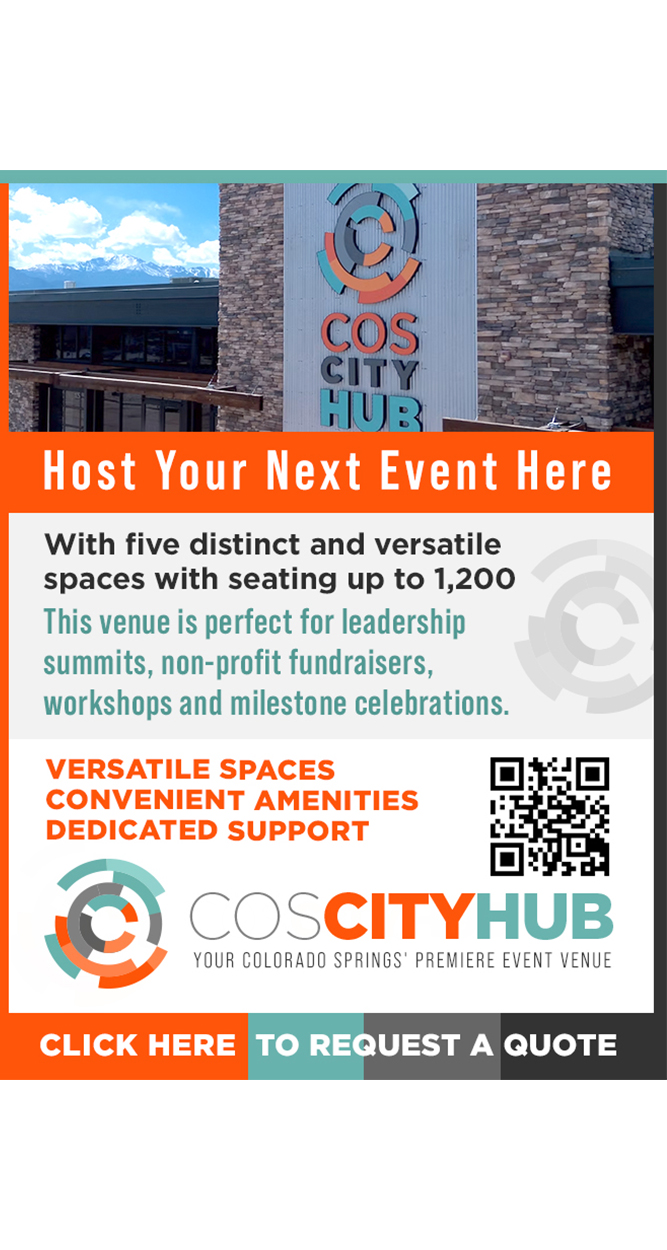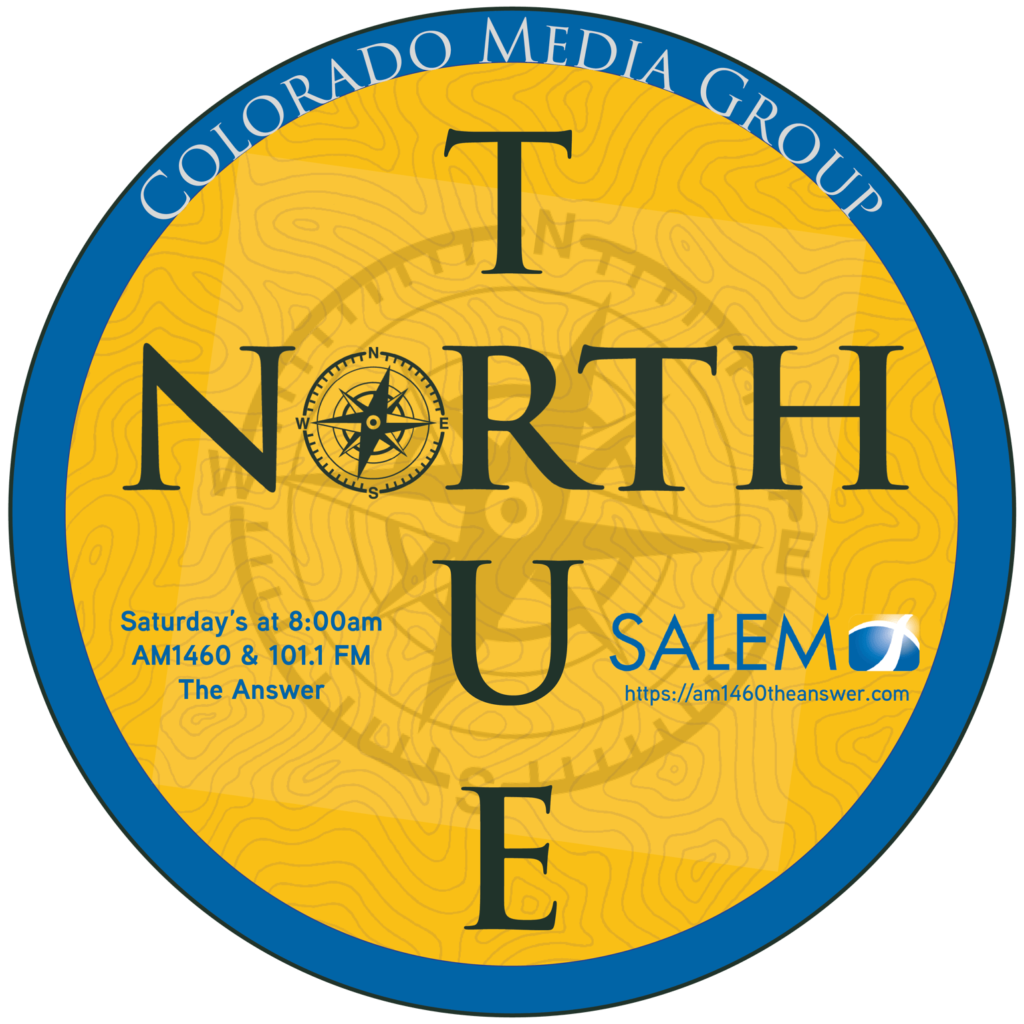By Theresa Woods
Businesses along Tejon Street from Colorado Avenue to East Kiowa Street in Downtown Colorado Springs must wait for the long-planned revitalization of their area. Groundbreaking on the $6 million Tejon Street Revitalization Project was postponed to update the design with additional suggestions from businesses as well as the results of a new parking study. Construction is now delayed until 2025. This segment is Phase One of a project which will eventually reach Boulder Street, and a small piece of the massive revitalization plan transforming Downtown Colorado Springs.
History of the Plan
In the early 2000s, Colorado Springs’ Downtown population had declined by 8% and development lagged behind the rest of the city, as well as other Front Range city centers. Stakeholders and city government developed the 2009 Imagine Downtown Master Plan, envisioning an “economic engine of the city, a desirable place to live, work, learn and play, and a point of public and private investment.”
The Experience Downtown Plan, adopted in 2016, was a tactical update developed with public input, multiple city and county government departments, the Urban Renewal Authority, the Downtown Development Authority Board, Downtown Partnership of Colorado Springs and the Regional Business Alliance, among others. The update also integrated the findings of nine other community plans such as the Colorado Springs Comprehensive and Strategic Plans, the Bicycle Master Plan, the Regional Transportation Plan and the Park System Master Plan.
Goals and Action Items
The vision for Downtown Colorado Springs is a refresh: repurposing, remodeling, and redeveloping the area. Key actions included in this revival are:
- Increase housing
- Develop strategic sites like the U.S. Olympic and Paralympic Museum* as catalysts to stimulate more surrounding development
- Generate new employment with industry-specific start-up space and support services, such as the artisan manufacturing node at Cottonwood Center for the Arts
- Add transportation options
- Improve parks, trails, signature streets, waterfronts and public spaces
- Introduce greenways
- Create attractive entrances and districts
- Emphasize greater density of residences and businesses, mixed-use buildings and walkability through revised building codes
Key to the overall plan was a housing renaissance with 2,000 new units built by 2025. “To truly thrive and support our over 200+ locally owned restaurants, bars, and retail businesses, our city center must have people living in it 24/7,” says Austin Wilson-Bradley, director of Economic Development at Downtown Partnership of Colorado Springs. “Downtown has opened 1,006 brand new units in 2024 alone.” [Currently, there are 2,274 housing units downtown, up from 435 units in 2014.]
Art, Transportation and Taxes
One of the first in the state, “Downtown is a state-certified Creative District, boasting four times the national average of creative activity and employment,” says Wilson-Bradley about the Colorado Springs art node’s economic role. “About 1,056 people are employed Downtown in creative occupations, and 2023 saw over $74 million in creative-industry earnings.”
The PikeRide e-bike share saw a 75% increase in miles ridden in 2023. Electric scooter rental increased 77% also, and The ZEB Downtown bus shuttle carried a staggering 88% more riders. These new options are direct consequences of Downtown Colorado Springs’ transportation revitalization.
“In 2023, Downtown [Colorado Springs] generated eight times more sales tax revenue per acre than citywide,” says Wilson-Bradley. With more than 25 new businesses opening annually and $700 million in investments currently under construction, revitalization is having the intended effect, according to Wilson-Bradley.
Up Next
The Tejon Street Revitalization is the next renovation to occur in Downtown Colorado Springs. “The project’s elements come right out of the master plan, including expanded outdoor dining space, improved safety through the corridor, and increased sidewalk space to accommodate residents and visitors with mobility needs,” says Richard Mulledy, Public Works Director for the City of Colorado Springs. This new environment intends to foster a welcoming and safe public space rich with entrepreneurial opportunity.
Looking far ahead, the waterfront of America the Beautiful Park is the first of the proposed COS Creek Plan projects in motion. In addition to improving stormwater management, the recreation, leisure, and economic development needs of Downtown will be prominently addressed. Combined with the eventual development of the city-owned Martin Drake Power Plant site, these two projects, when they come, will represent a significant evolution of Downtown. While the work done to date has had measurable effect, future work on these sites has the potential to be even more significant.
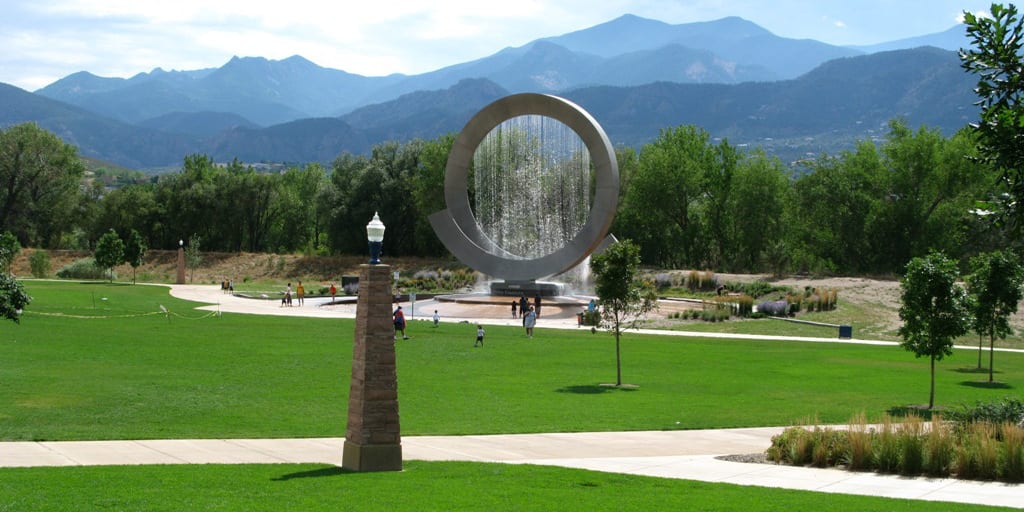
Downtown Plan Projects Accomplished So Far:
- America the Beautiful Park
- Establish Form Based Code regulations for downtown
- Catalyst Campus
- U.S. Olympic and Paralympic Museum
- Olympic Museum Plaza
- Weidner Field
- New mixed-use buildings surrounding Weidner Field
- Redevelopment of the Santa Fe Railroad Depot
- Blue Dot Place, 333 ECO, Fiona, Mae on Cascade and Casa Mundi apartment complexes added
- Springs Rescue Mission multi-agency campus expansion to include medical, dental, library, laundry, human services and job search aids
- Art Spot project, addition of 21 art pieces by Pikes Peak Region artists
- Acacia Park playground
- Mountain Metropolitan Transit bus system route and hours expansion
- The ZEB circulator bus shuttle
- PikeRide e-bike share program
- Electric scooter share program
- AdAmAn Alley utility infrastructure and paving upgrade, new public art, safety improvements
- Antler’s Park off-leash dog park
- Revel: Urban Arts Party (annual event)
- Pedestrian Bridge from America the Beautiful Park
- I-25 and Cimarron Street interchange improvements
- Additional hotels: Hyatt Place, Kinship Landing, Springhill Suites, Garden Inn, Element
- South Downtown Railroad Underpass Reconstruction at Nevada Avenue, Tejon Street and Shooks Run
- Demolition of Drake Power Plant
- Construction of additional 2,000 new housing units by 2025
Continuing Downtown Plan Priorities:
- Add commercial real estate
- Add start-up space, coworking space
- Tools and supports for street level retailers, restaurants, pop-up markets, and service businesses, and creative and innovation-based industries
- Increase artisan manufacturing and maker spaces
- Improve infrastructure throughout, especially technology infrastructure
- Add water recreation along Monument and Fountain Creeks
- Improve public safety, cleanliness throughout
- Add parking
- Add additional public art by expanding existing programs and murals
- Add local food and beer/spirits events and live performances
- Intersection safety improvements
- Create safer environments for bicycles and pedestrians along streets wherever possible
- Increase permeable surfaces for stormwater management
- Create Pedestrian Priority Streets and areas
- Provide areas for outdoor dining, public art, street vendors, landscaping, and benches and other outdoor seating options, especially surrounding building entrances
- Increase trees and vegetation throughout
- Add consistent aesthetic and branding considerations to signs, functional elements such as streetlights and paving, and public spaces
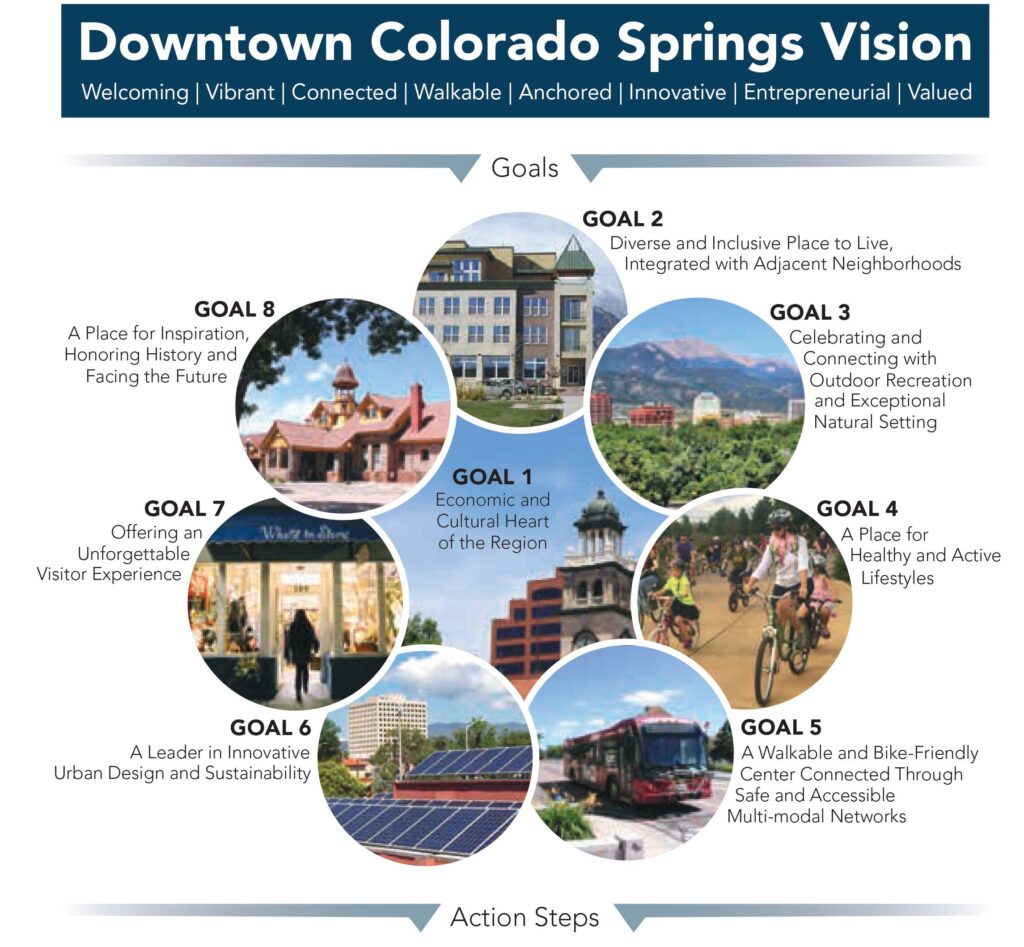
Visions of the Plan:
1. Economic and Cultural Heart of the Region
Downtown’s economic, civic and cultural energy expands throughout the region. Cultural assets and unique retail and restaurant offerings are attractive to new talent. New businesses, entrepreneurs and urban professionals integrate themselves into Downtown’s economic context. New technologies and innovative ideas transform Downtown while respecting its cultural heritage.
2. Diverse and Inclusive Place to Live, Integrated with Adjacent Neighborhoods
Downtown’s neighborhoods are thriving places providing housing and amenities for people and families of all cultures, ages and incomes. Efforts are made to preserve existing neighborhood character while encouraging residential growth, focusing on building a greater density of residents within the core and surrounding neighborhoods. New and modified residential development includes workforce and affordable housing. Public transit, employment opportunities, schools, shopping and parks are conveniently located within walking distance.
3. Celebrating and Connecting with Outdoor Recreation and Exceptional Natural Setting
Downtown Colorado Springs is unique and nationally known as a thriving urban area integrated with world-class outdoor and recreational opportunities. The Legacy Loop trail system is a beloved and cared for asset.
4. A Place for Healthy and Active Lifestyles
Downtown Colorado Springs recognizes the importance of promoting healthy living through its built form and established programs. An interconnected system of parks, trails, waterways, open space and recreational facilities supports healthy and active lifestyles throughout Downtown neighborhoods. Organized events and activities devoted to improving people’s health and wellness take root in the city center.
5. A Walkable and Bike-Friendly Center Connected Through Safe and Accessible Multi-Modal Networks
Downtown leaders understand the importance of being a hub for city and regional transportation. Well designed and maintained streets, pathways, alleys, transit and facilities are concentrated at the heart of Colorado Springs, providing access and mobility to all destinations.
6. A Leader in Innovative Urban Design and Sustainability
Downtown is a place where people want to be because of its beauty, comfort and sustainable practices. The transition between private development and public space is seamless, providing ample outdoor space to take in the Colorado sunshine. The once vast amount of underutilized space, including vacant parcels, surface parking lots and wide right-of-ways, now consists of innovative building designs, construction materials and stormwater management. Environmental stewardship is garnered by public and private improvements.
7. Offering an Unforgettable Visitor Experience
Downtown offers a distinct experience for visitors unlike any other city of its size. Visitors as well as locals enjoy the U.S. Olympic Museum and other one-of-a-kind anchors as well as the shopping, dining, culture and authentic vibe of the city center.
8. A Place for Inspiration, Honoring History and Facing the Future
Incentives to discover Downtown are inspired by enriched relics of the past, including adaptively reusing celebrated architecture and repurposing historic streets to safely support multiple transportation modes. Arts, culture and a thriving culinary and craft brew scene thrive.
The public investment that built the U.S. Olympic and Paralympic Museum attracted large private investments which transformed the surrounding area. Planned since 2015, and open since 2020, the museum was projected to draw up to 350,000 visitors a year; 2023 saw 109,300 visitors.






